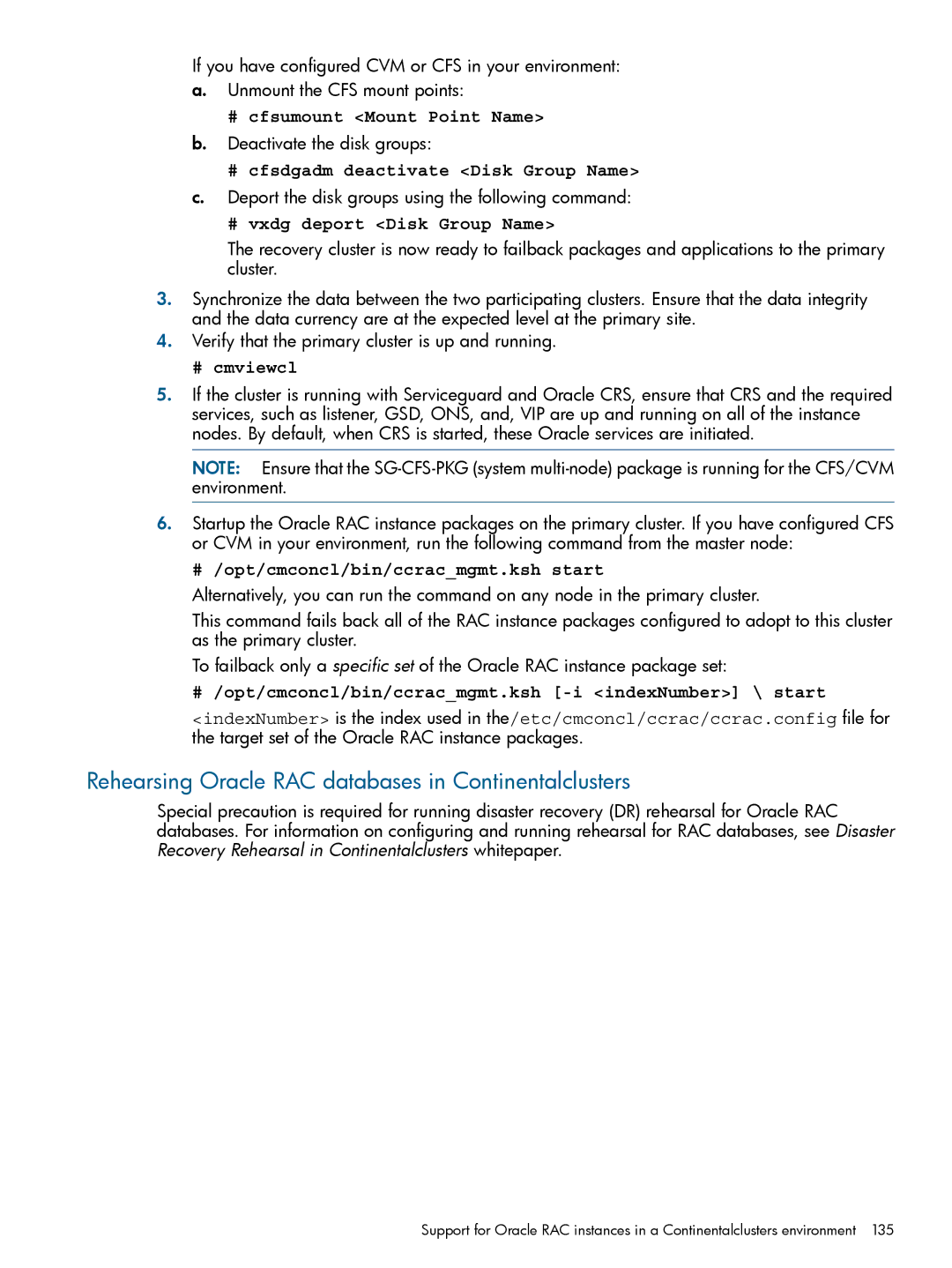If you have configured CVM or CFS in your environment:
a.Unmount the CFS mount points:
#cfsumount <Mount Point Name>
b.Deactivate the disk groups:
#cfsdgadm deactivate <Disk Group Name>
c.Deport the disk groups using the following command:
#vxdg deport <Disk Group Name>
The recovery cluster is now ready to failback packages and applications to the primary cluster.
3.Synchronize the data between the two participating clusters. Ensure that the data integrity and the data currency are at the expected level at the primary site.
4.Verify that the primary cluster is up and running.
#cmviewcl
5.If the cluster is running with Serviceguard and Oracle CRS, ensure that CRS and the required services, such as listener, GSD, ONS, and, VIP are up and running on all of the instance nodes. By default, when CRS is started, these Oracle services are initiated.
NOTE: Ensure that the
6.Startup the Oracle RAC instance packages on the primary cluster. If you have configured CFS or CVM in your environment, run the following command from the master node:
#/opt/cmconcl/bin/ccrac_mgmt.ksh start
Alternatively, you can run the command on any node in the primary cluster.
This command fails back all of the RAC instance packages configured to adopt to this cluster as the primary cluster.
To failback only a specific set of the Oracle RAC instance package set:
# /opt/cmconcl/bin/ccrac_mgmt.ksh [-i <indexNumber>] \ start
<indexNumber> is the index used in the/etc/cmconcl/ccrac/ccrac.config file for the target set of the Oracle RAC instance packages.
Rehearsing Oracle RAC databases in Continentalclusters
Special precaution is required for running disaster recovery (DR) rehearsal for Oracle RAC databases. For information on configuring and running rehearsal for RAC databases, see Disaster Recovery Rehearsal in Continentalclusters whitepaper.
Support for Oracle RAC instances in a Continentalclusters environment 135
